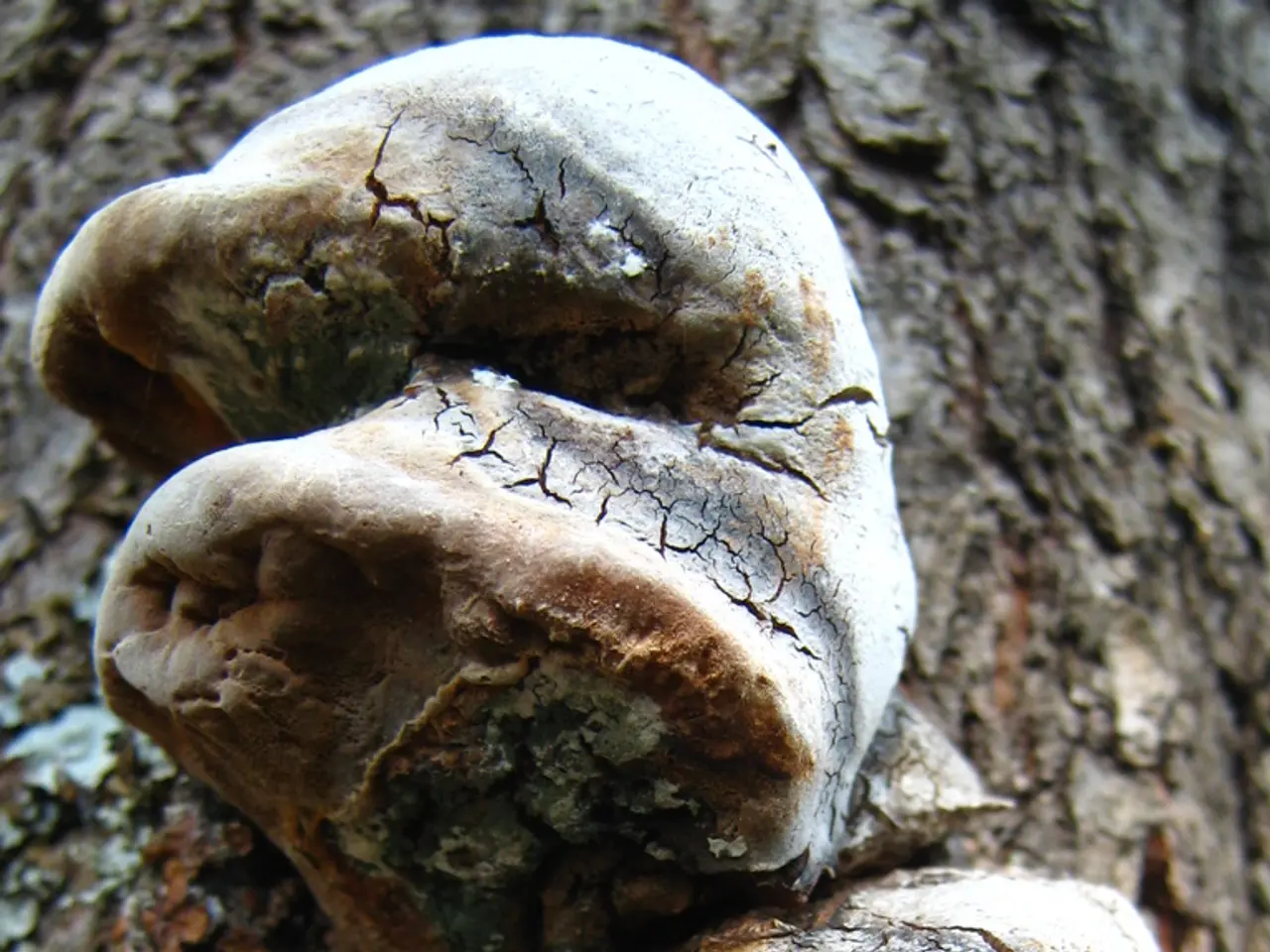Lung Granulomas Calcified: Symptoms, Causes, and Additional Information
In the realm of lung health, a common finding that often raises questions is calcified lung granulomas. These benign growths, composed of immune cells with calcium deposits, can be caused by a variety of factors, as a new study published in the Journal of Thoracic Disease reveals.
Granulomas, which are not cancerous, can form due to inflammation, infections, or foreign objects. The most frequent causes leading to granuloma formation and potential calcification are infectious in nature.
Infectious Causes
Tuberculosis (TB), caused by Mycobacterium tuberculosis, is a leading culprit. Tuberculous granulomas, or tuberculomas, often calcify and present as well-defined focal masses in the lung. Other common infectious causes include fungal infections such as Histoplasmosis and Blastomycosis, which can cause granulomatous inflammation with subsequent calcification, especially in endemic areas.
Non-Infectious Causes
While less common, non-infectious causes can also produce granulomas that may calcify. Sarcoidosis, a multisystem inflammatory disease, is a principal non-infectious cause. Although sarcoid granulomas are typically noncalcified initially, chronic granulomas can show calcification as they heal in some cases. Other inflammatory or autoimmune diseases might cause granulomatous reactions, but calcification is less typical and usually related to secondary processes or scarring.
Common Causes of Calcified Lung Granulomas
The most common causes for calcified lung granulomas are prior infections with Mycobacterium tuberculosis and endemic fungal infections, with sarcoidosis as a principal non-infectious cause. Differentiating infectious from non-infectious etiologies usually requires clinical, radiological, and sometimes histological correlation since imaging features may overlap.
Sarcoidosis and COVID-19 Recovery
Recovery from severe COVID-19 infection may lead to the development of sarcoidosis, causing granulomas to form in the lungs and lymph nodes. Sarcoidosis, an inflammatory condition, causes granulomas to form in the lungs and chest lymph nodes. Risk factors for sarcoidosis include being older than 55 years, working with insecticides, mold, or substances that may cause inflammation, having a family history of sarcoidosis, taking certain HIV medications or monoclonal antibodies, being of African or Scandinavian descent, and being female.
Rare Cases and Symptoms
In rare cases, calcified lung granulomas may occur with pneumocystis jirovecii pneumonia (PJP), a type of pneumonia from fungi. Symptoms of calcified granulomas in the lungs may include wheezing, shortness of breath, coughing, and chest pain.
Diagnosis and Treatment
To diagnose calcified lung granulomas, doctors may perform a detailed medical history, physical examination, imaging scans such as CT scans, pulmonary function tests, lung biopsy, testing for infections, bronchoscopy with bronchoalveolar lavage, and other tests. Treatment for calcified lung granulomas often involves treating the underlying cause or trigger of the granulomas. For example, sarcoidosis can be treated with corticosteroids to reduce inflammation.
In conclusion, understanding the common causes of calcified lung granulomas is crucial for accurate diagnosis and effective treatment. While infectious causes are more frequent, non-infectious causes, such as sarcoidosis, should not be overlooked. As always, consultation with a healthcare professional is advised for any concerns regarding lung health.
- Tuberculosis, caused by Mycobacterium tuberculosis, is a leading cause of calcified lung granulomas, often presenting as well-defined focal masses in the lung.
- In the context of health and wellness, understanding the predictive factors for calcified lung granulomas can help in timely diagnosis and treatment.
- Calcified lung granulomas can arise not only from infectious causes like tuberculosis and endemic fungal infections but also from non-infectious causes, like sarcoidosis.
- The science of medical-conditions like asthma, COPD, and ulcerative colitis, which are respiratory and digestive conditions, should be considered when evaluating the health status of individuals with calcified lung granulomas.
- Retargeting efforts to raise public awareness about the potential connections between rare medical cases, such as those involving PJP and calcified lung granulomas, can help promote early detection and treatment.
- A comprehensive medical history, imaging scans, and lab tests can help doctors diagnose calcified lung granulomas, as well as identify the underlying cause or trigger.
- When it comes to managing calcified lung granulomas, treatment will often depend on the specific medical-condition causing the granulomas, with options such as corticosteroids being common for conditions like sarcoidosis.




